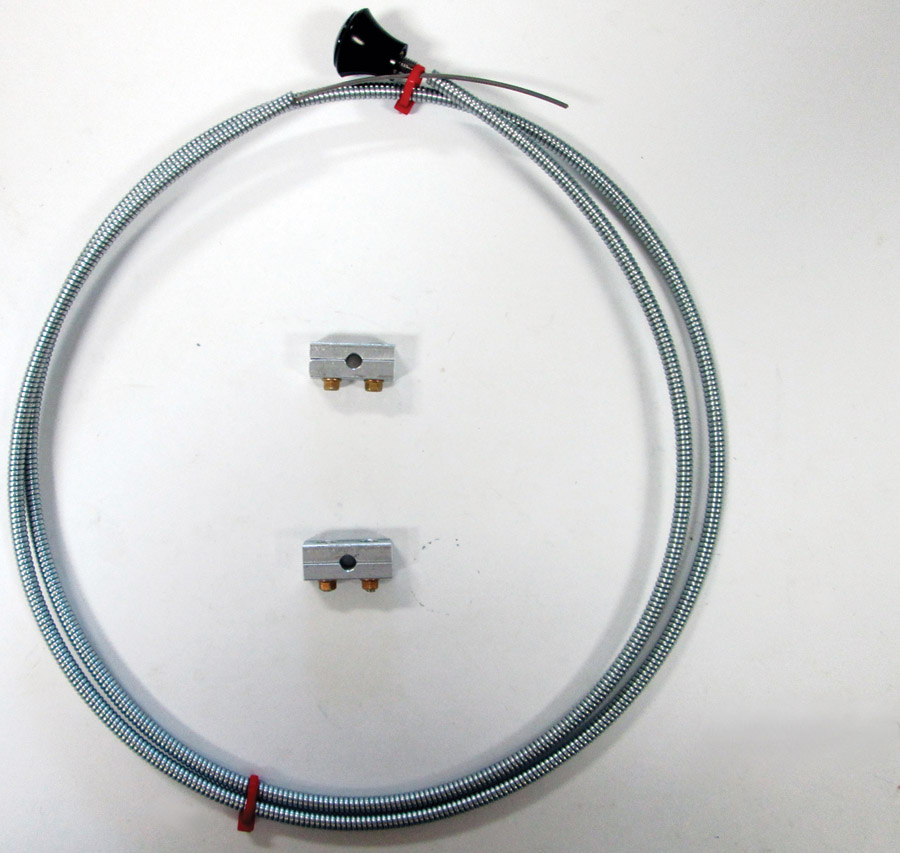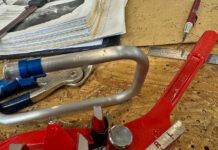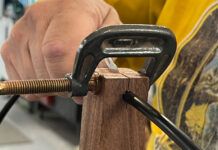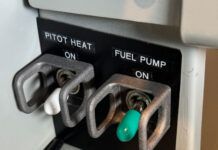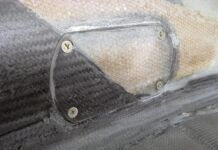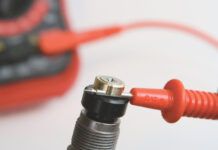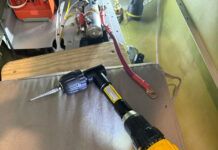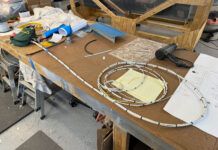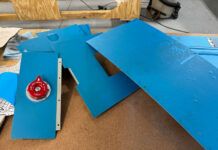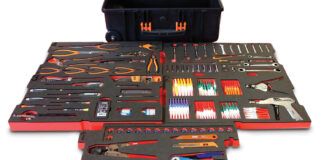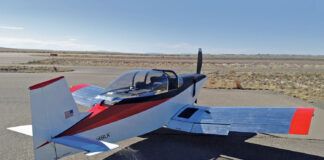The Creative Homebuilder says that making light-duty control cables is one of his favorite projects because of the simplicity and usefulness of the cables. He’s also found a way to improve the basic design.
Typical Bowden cables have a rigid, straight section of tube attached to the spiral cable housing at the knob end. The tube’s primary purpose is to support the flange and nut that secure the cable to the airframe. The problem with this 3-inch (or longer) tube is that redirection of the cable is not possible within the straight section of tubing. This restriction can reduce the opportunities for locating the wire control. Without the freedom to begin the “bending” of the cable immediately beyond the installation clamp, most Bowden cables will be mounted horizontally because that direction provides the most clearance needed for the bending to take place after the housing exits the mounting sleeve.

Close-up of the constituent parts. When finished and installed, the holes for the socket-head Allen screws will be counterbored so the heads will be flush with the top of the clamp.
The Creative Homebuilder’s system uses a simple two-piece clamp that mounts to a flat surface and can be placed as close to the knob end as needed. What that means is that the bending or rerouting of the control cable can begin as soon as the housing exits the clamp. With the extra 3 inches (or more) of bending opportunity, the cable can be mounted in almost any orientation—horizontal, vertical, or anywhere in between. This benefit allows more efficient use of space that can be hard to come by later in the build.
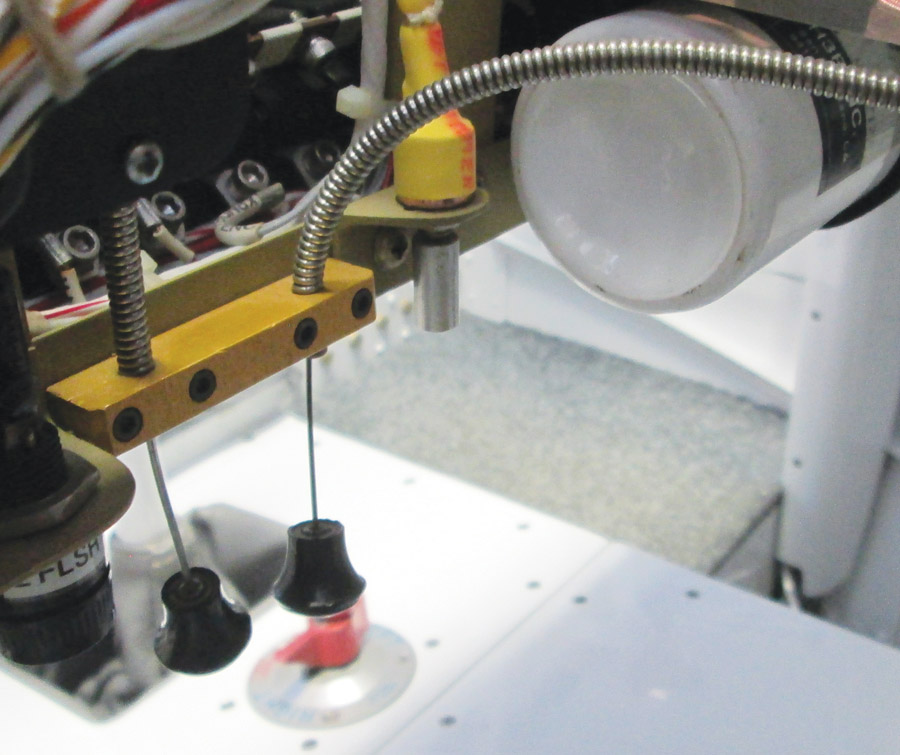
A typical installation from the Creative Homebuilder’s Rocket showing the convenience of being able to mount the cable in a vertical position with the bend or redirection starting immediately after the housing exits the split clamp. The cable on the left controls fresh air to the forward cockpit area, and the cable on the right links to the oil cooler bypass door. Very little space is needed for these two functions when using this system. Note that the system utilizes 0.055-inch core wire and mating spiral housing, and is effective for light-duty services only.
The process begins with buying blank core wire and spiral housing from Aircraft Spruce or a similar vendor. The Creative Homebuilder then swages or silver brazes a 10-32NF x 5/8 threaded rod at one end. A knob from McMaster-Carr is attached to it using red Loctite. The standard two-piece, split clamp is made from bar stock aluminum and provides just enough force to hold the housing firmly and attach to whatever support structure is available. When he wants a more “tricked-out” look, he sends them out to be anodized.
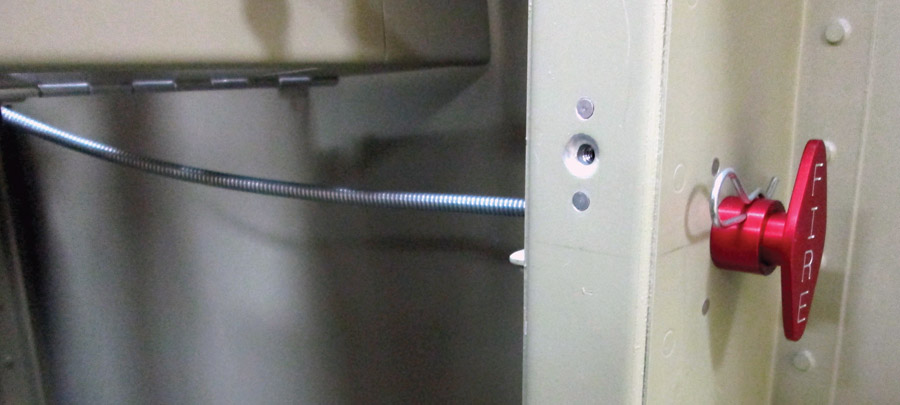
The Creative Homebuilder plans a fire suppression system in his current build and is installing it with a light-duty wire control.
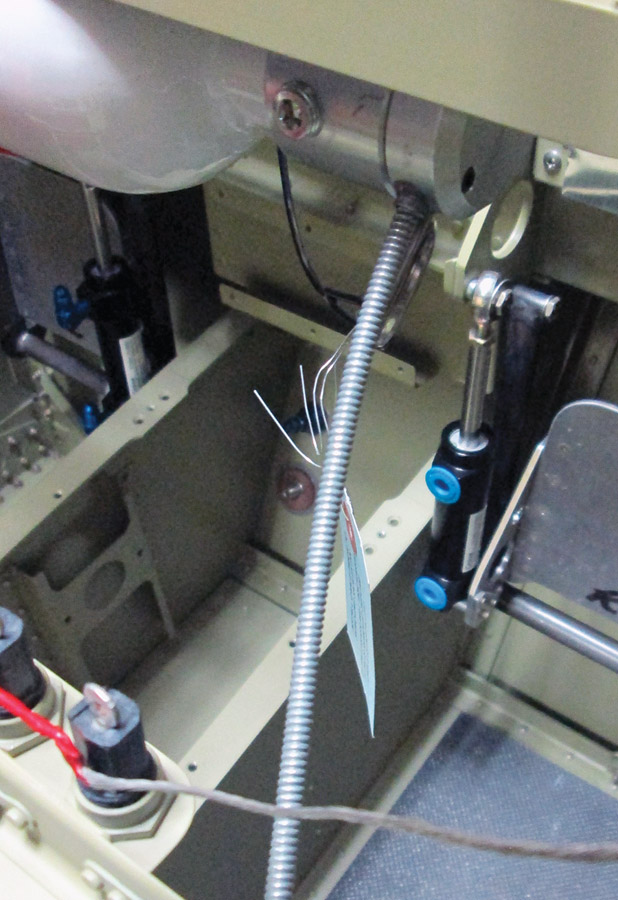
The wire for the fire suppression system makes a couple of bends that would be awkward for a conventional Bowden cable.

